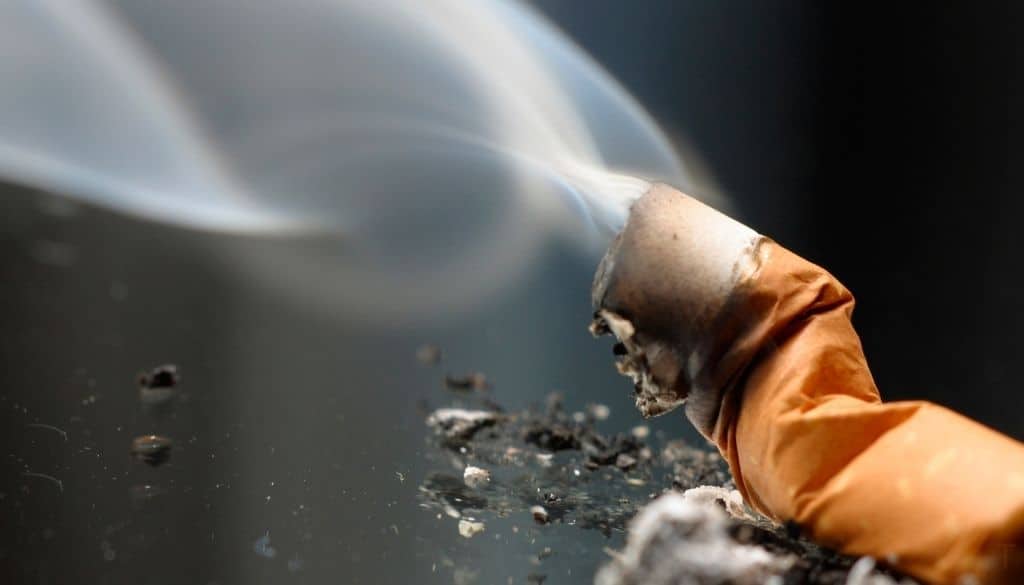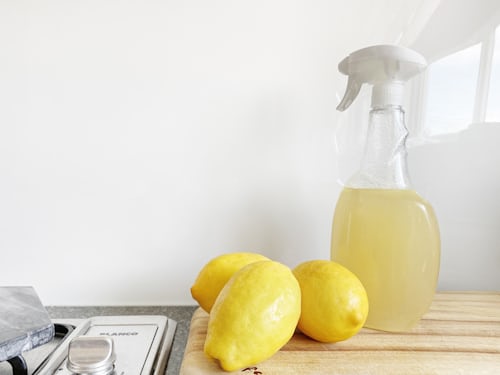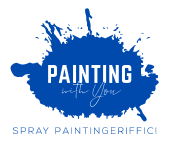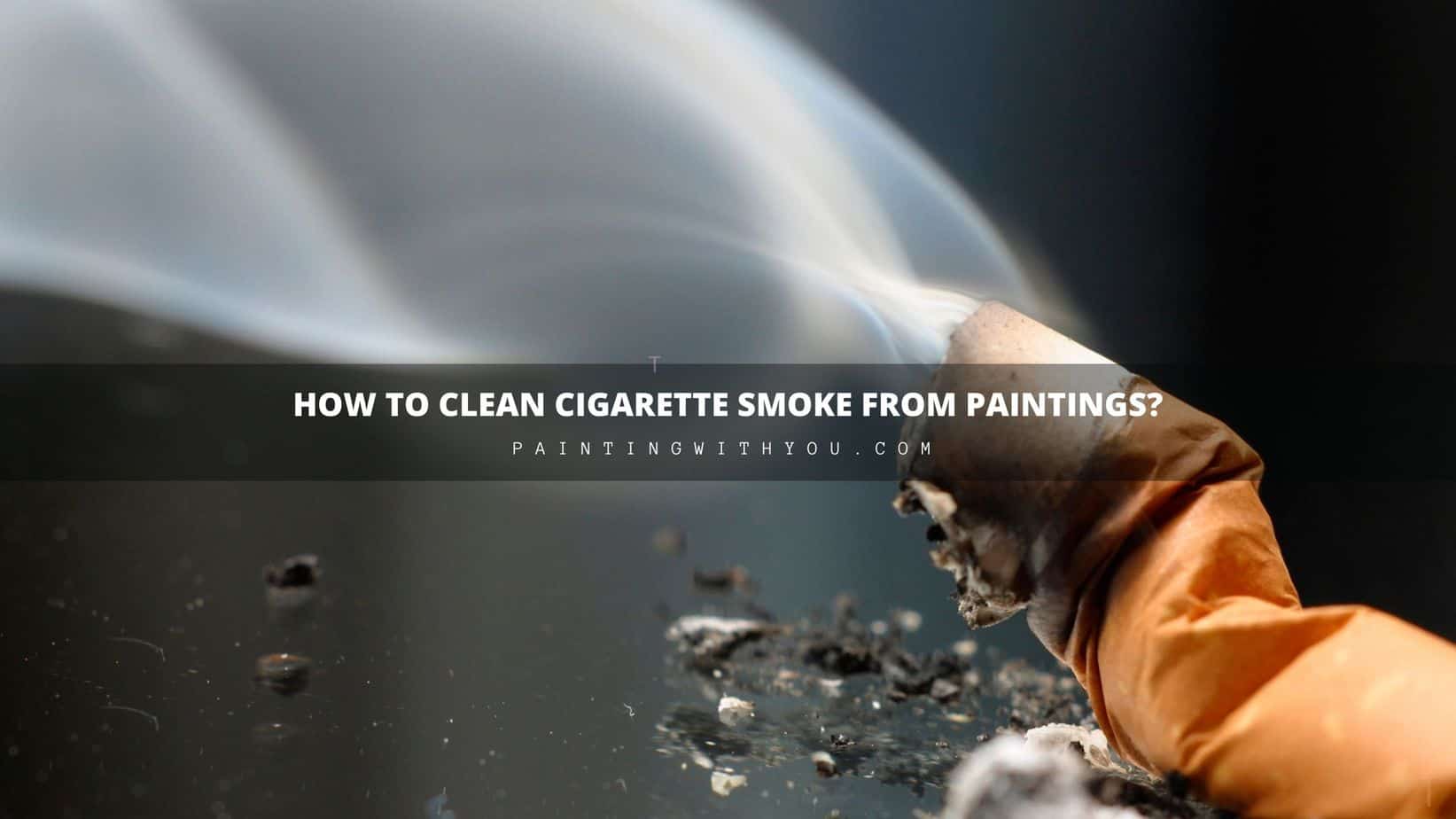Removing cigarette smoke from paintings is a task that should be done meticulously and gently.
While professional refurbishing businesses should clean paintings of cigarette damage and odor, especially if the piece of high value, you may still be able to clean it yourself as well.

How to Clean An Oil Painting From Cigarette Smoke by Yourself?
Cleaning paintings that have been exposed to the harsh odor and soot of cigarettes is time-consuming, but in some cases, it is possible to revive these artworks.
Preparing to Clean an Oil Painting Affected by Cigarette Smoke
Before starting to clean an oil painting suffering from cigarette smoke residue, there are some important preparatory steps I take:
- Set up in a well-ventilated workspace with good airflow. Wearing a respirator is recommended to avoid inhaling residues.
- Don protective gear like nitrile gloves, goggles, and a smock or apron. This prevents skin contact with cleaning solutions.
- Acquire cleaning supplies like distilled water, mild detergent, soft cloths, cotton swabs, bread, and vinegar. Avoid harsh chemicals.
- Carefully examine the painting to assess the extent of smoke damage and yellowing. Look for any paint flaking or canvas abrasion.
- Determine the appropriate cleaning method based on the paint’s fragility and smoke accumulation. Start with the gentlest approach.
I always do a small test spot with any new cleaning agent on an inconspicuous area first. This verifies compatibility with the specific paint medium before wider application.
Cleaning Techniques for Removing Cigarette Smoke from Oil Paintings
There are several techniques I’ve used with success to gently clean oil paintings affected by cigarette smoke:
The Bread Method
- Lightly wet a small section of the oil painting with distilled water applied via cotton swab.
- Gently rub the wetted area using a soft, fresh piece of bread – white bread works best.
- The bread helps lift dirt and oily residue loose without abrasion.
- Avoid applying too much pressure. Work in small areas until smoke residue is reduced.
Vinegar Solution
- In a spray bottle, mix equal parts distilled water and white vinegar. Shake well to blend.
- Mist the solution onto the oil painting in light, even coats. Avoid over-saturation.
- Gently wipe the vinegar-coated area with a soft, dry cloth using minimal pressure.
- Work systematically in small sections until the painting is cleaned.
Dish Soap and Water
- In a bowl, make a dilute solution of mild dishwashing liquid like Dawn and distilled water.
- Using a clean sponge, apply the solution lightly to the oil painting.
- Rinse with distilled water on a fresh sponge, changing the water frequently.
- Allow to fully dry before evaluating if more cleaning is needed.
Specialty Cleaning Agents
- There are also specialty oil painting cleaners available I’ve used with success, like Gainsborough Neutralizer.
- Carefully read the product directions and do a patch test first.
- Apply a small amount to a soft cloth, then gently wipe the surface.
- Avoid excessive rubbing, rinsing thoroughly after.
Expert Tips for Safely Cleaning Smoke-Damaged Oil Paintings
Based on my experience, here are some expert tips to ensure safe, effective cleaning of cigarette smoke residue from oil paintings:
- Never use turpentine or strong solvents – these can dissolve paint layers. Stick to gentle cleaners.
- Don’t try to completely remove varnish – abrading it can damage the painting. Just reduce yellowing.
- Avoid excessive moisture – this can loosen canvas sizing and cause paint cracking.
- Work methodically in sections – this prevents accidentally re-cleaning areas.
- Let sections dry fully before reassessing – you may need multiple gentle cleaning sessions.
- Consider professional help for delicate or valuable paintings – specialist methods may be needed.
With patience and care, smoke odors and residues can be safely reduced from affected oil paintings using these techniques. But severe damage may require a professional conservator.
Check out the nicotine removal from Brandy, the expert!
Understanding Cigarette Smoke Damage on Oil Paintings
Oil paintings are vulnerable to damage when exposed to cigarette smoke over time. The nicotine and other pollutants in cigarette smoke can cause yellowing of the varnish layer and penetrate into the paint layers. This can cause irreversible damage if not properly cleaned.
Here are some of the potential effects cigarette smoke has on oil paintings that I’ve observed:
- Yellowing or darkening of varnish, affecting the original colors and details
- Embrittlement and cracking of paint layers as pollutants accumulate
- Loss of adhesion between paint and canvas as binders deteriorate
- Removal of protective coatings, exposing bare canvas to further damage
- Permeation of stubborn odors into porous paint that are difficult to remove
Properly cleaning an oil painting can arrest some of this damage and restore the artwork’s appearance. But severe smoke exposure may require extensive restoration by a professional conservator. It’s important to take steps to clean paintings before major damage sets in.
Bonus
How to Clean An Acrylic Painting From Cigarette Smoke
Cleaning cigarette smoke residue from an acrylic painting requires gentle methods to avoid damaging the artwork. Here are some effective techniques:
Breadcrumb Method
- Lightly moisten a small section of the acrylic painting using a cotton swab dipped in distilled water.
- Gently rub the dampened area with a piece of soft white bread, lifting dirt and oily residue.
- Work systematically in small sections until smoke residue is reduced. Avoid applying excess pressure.
Diluted Vinegar
- In a spray bottle, mix equal parts distilled water and white vinegar. Shake to blend well.
- Mist the solution lightly over the acrylic painting’s surface. Avoid over-saturating.
- Use a soft, dry cloth to gently wipe the vinegar-coated areas. Change cloths frequently.
- Rinse with a vinegar-dampened cloth followed by a water-dampened cloth.
Specialty Acrylic Cleaners
- Use a product specifically designed for acrylic paint like Golden’s Acrylic Painting Conservation Cleaner.
- Carefully follow the manufacturer’s instructions for proper use.
- Apply the cleaner lightly to a soft cloth, then wipe the painting in sections.
Always start with the least abrasive method and test on an inconspicuous spot first. Let sections dry fully before reassessing if more cleaning is needed. Avoid rubbing vigorously or introducing excess moisture. Take great care with acrylics, as they can be prone to damage if cleaned improperly.

Common Questions You Might Be Asked
What not to use when cleaning paintings from cigarette damage
When cleaning a painting with cigarette damage and smell don’t use Water, bread, potatoes, alcohol, vinegar, and baby oil. You can damage a piece of art further by using these methods.
These can be especially damaging to an oil painting specifically, although they are not recommended cleaning methods for any paint medium.
Will painting get rid of the cigarette smell?
While painting can mask any physical damage, unfortunately, it cannot hide the odor of cigarettes too well. Because paint is a porous substance, it permeates into any paintings left in areas of cigarette smoke, even for short periods of time. The odor will be worse for paintings kept in or around cigarette smoke for years on end.
While you may not get rid of the smell altogether, I would recommend you seal the painting with a sealer of your choice.
Doing this seals off the smell already permeated into the canvas while also masking the scent and keeps the new cleaning job-protected.
NOTE: Oil paintings can become irreversibly damaged if their varnish is stripped off poorly or without the correct professional-grade solutions.
It is also important to remember that select paintings may be beyond refurbishment when it comes to cigarette odor. However, advancements in the preservation and refurbishing of paintings continue to grow, so a future solution to odor reversal on canvases is possible!
How do you clean cigarette smoke off of a canvas picture?
To remove cigarette smoke residue from a canvas picture, you can try:
- Breadcrumbs or chewed bread to lift and absorb deposits.
- Diluted white vinegar solution wiped on gently with a soft cloth.
- Specialty art restoration cleaning products designed for smoke removal.
Avoid excess moisture or pressure. Work methodically and allow sections to fully dry before re-cleaning.
Can cigarette smoke damage paintings?
Yes, cigarette smoke can cause several types of damage to paintings over time, including:
- Yellowing and darkening of varnish layers
- Embrittlement and cracking of the paint surface
- Deterioration of canvas sizing and paint adhesion
- Odor permeation into porous paint layers

